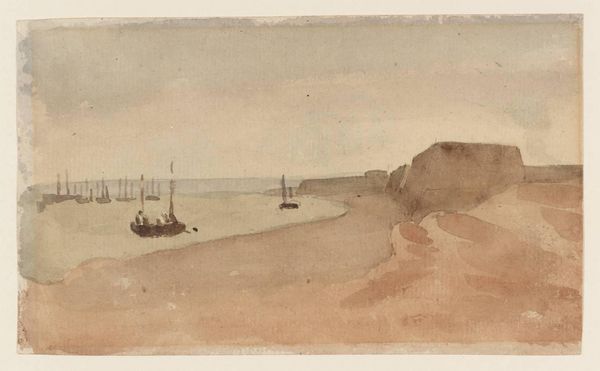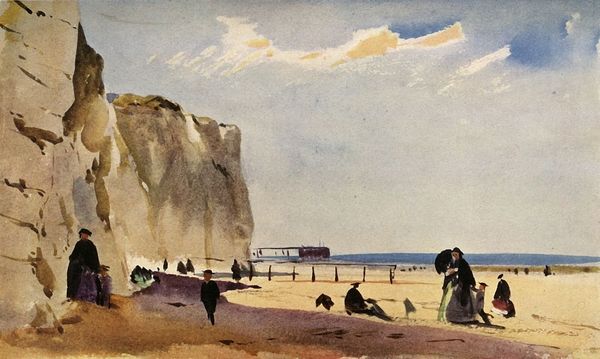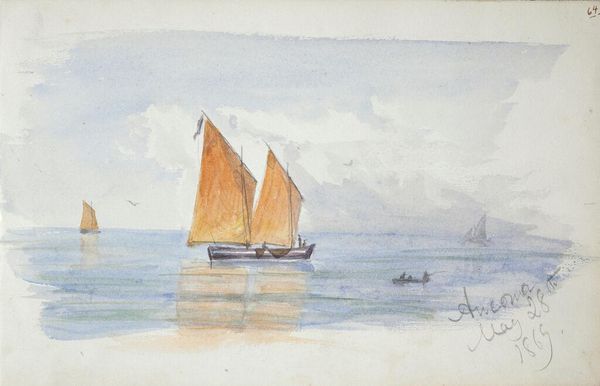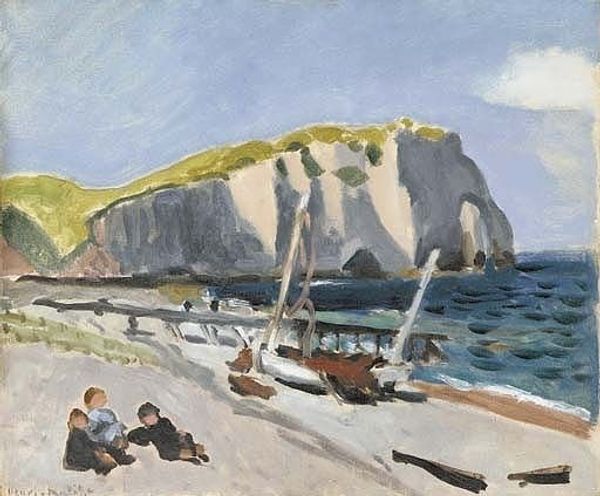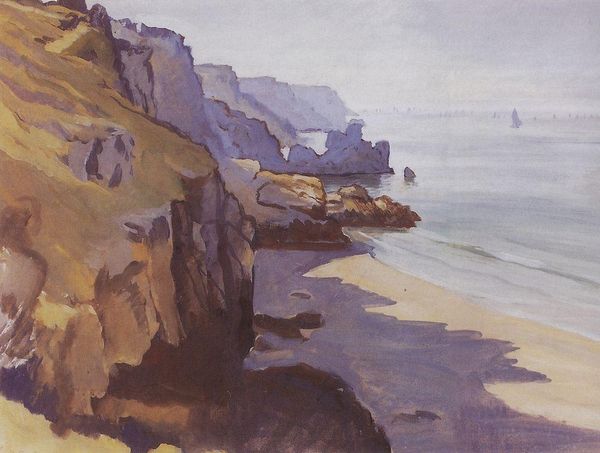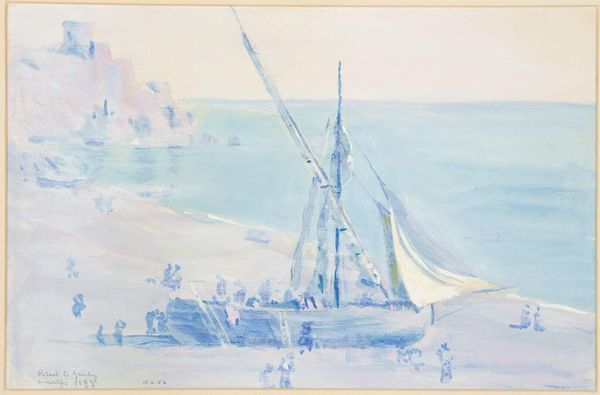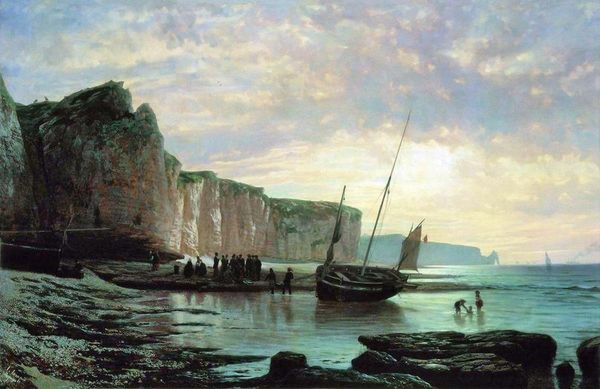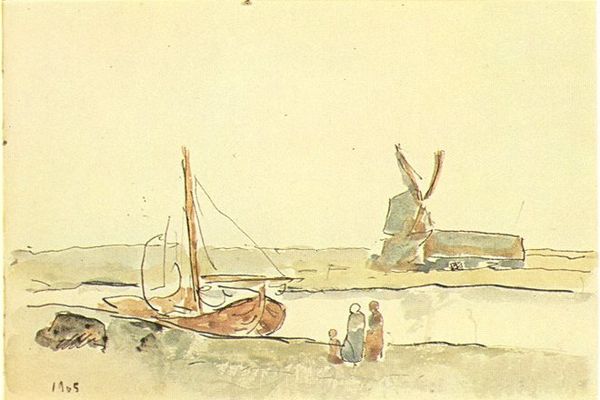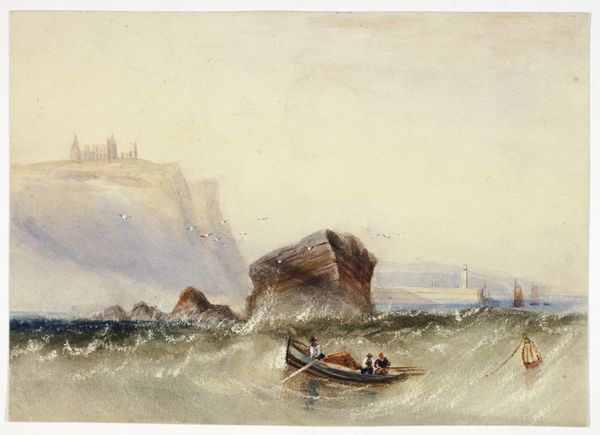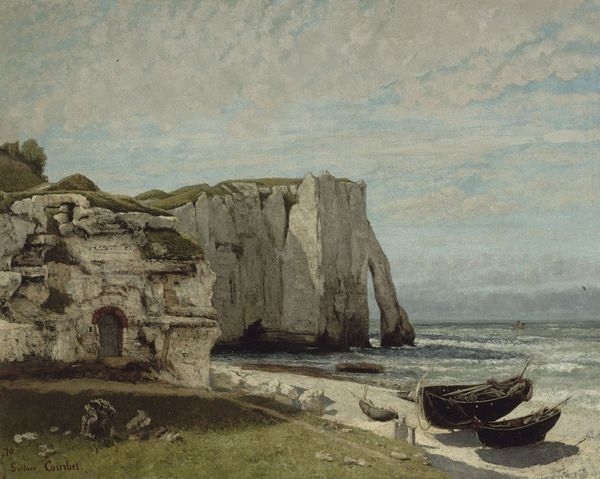
Copyright: Public domain
Curator: Louise Abbéma's "La plage d’Étratat," painted in 1908, captures the unique coastline of Normandy with impressionistic strokes. What’s your first impression? Editor: The cool, almost desaturated tones create a very melancholic mood. The light feels very soft and diffuse, but also a bit bleak. It really speaks to the ephemerality of coastal life, the constant negotiation between land and water. Curator: The coastal scene in Étratat has indeed become iconic. Abbéma’s choice to focus on the boats drawn up on the beach does offer an intimate and everyday look into this place. It shifts our perspective to the locals' interaction with this celebrated landmark. Editor: Yes, it's less about the grandeur of the cliffs themselves and more about how humanity situates itself within that landscape. These boats feel stranded, reliant on tides that may or may not cooperate. I find the scene quite loaded with that sense of uncertain hope and potential exploitation. Curator: Absolutely. Abbéma often worked en plein air to truly capture these transient effects of light. The sails catch the light, infusing them with an almost symbolic importance. As emblems of travel and trade, the vessels can stand in for the wider societal shift of Étratat transitioning into a resort destination for artists and the bourgeoisie. Editor: Considering Abbéma was openly lesbian and lived and worked within very specific circles of Parisian society, I wonder what her relationship with these boats as a symbol of commerce might have been. Were they vehicles of personal liberation, or indicative of industries that enabled exploitation and alienation, even then? Curator: It's fascinating to read that potentially ambiguous tension within this scene. Even now, a painting so evocative can elicit diverse cultural connotations, prompting contemplation about industry, independence, and freedom. Editor: Right. There are layers here. These aren't simple aesthetic choices; they reflect broader dialogues about humanity's place in the world and on our fragile coastlines. Thank you for sharing your knowledge with me, and sparking even more layers of thought!
Comments
No comments
Be the first to comment and join the conversation on the ultimate creative platform.
